One Python can implement all algorithms

Today I recommend a useful tip for learning Python.
A few Indian guys have built an introductory guide to various Python algorithms on GitHub, which now has more than 26,000 stars.
This project mainly includes two parts: one is the explanation of the basic principles of various algorithms, and the other is the code implementation of various algorithms.
The portal is here:
https://github.com/TheAlgorithms/Python
A brief introduction.
Explanation of the basic principles of algorithms, including sorting algorithms, search algorithms, interpolation algorithms, jump search algorithms, fast selection algorithms, tabu search algorithms, encryption algorithms, etc.
Related recommendations: "Python Video Tutorial"
This part mainly introduces the principles of various algorithms, many of which also provide dynamic schematic diagrams. So that beginners can understand it more intuitively. Moving a few examples:
Cocktail sorting algorithm
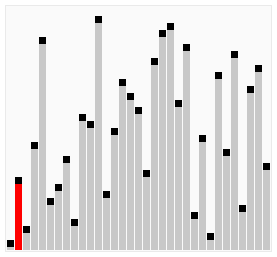
Cocktail shaker sorting, also called Bidirectional Bubble Sort, etc. This is a variation of bubble sort. The difference is that bubble sort compares each element in the sequence from low to high, while cocktail sort sorts back and forth in two directions (low to high, high to low), which is more efficient.
Quick Select Algorithm
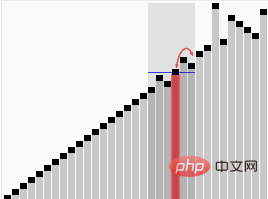
ROT13 encryption algorithm
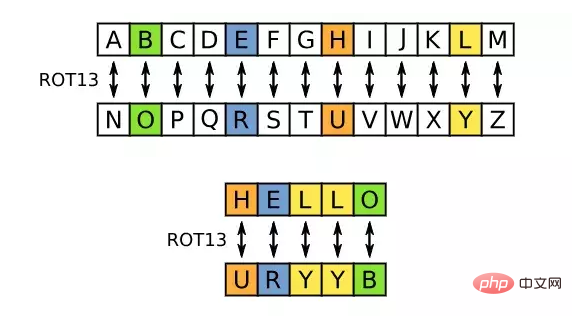 ##Rot13 (rotate by 13 places) is a very simple replacement Encryption algorithm used to encrypt the 26 English letters. The method is: replace each letter with the 13th letter after it.
##Rot13 (rotate by 13 places) is a very simple replacement Encryption algorithm used to encrypt the 26 English letters. The method is: replace each letter with the 13th letter after it.
Of course, this algorithm is also very simple to crack. It only requires reverse substitution. Therefore, this algorithm provides almost no encryption security and is often used as a typical case of weak encryption.
In addition, this project also provides code implementations of various Python algorithms.
Includes Binary Tree, Dynamic Programming, Hashes, Linear Algebra, Machine Learning, Neural Networks, etc.
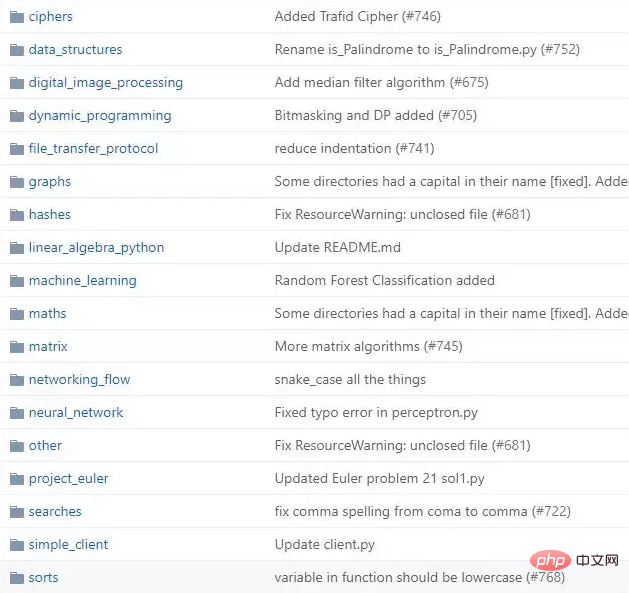 For example, in the category of machine learning, random forest classification, random forest regression, naive Bayes, decision tree, k-value clustering, linear regression, Logistic regression, perceptron, etc.
For example, in the category of machine learning, random forest classification, random forest regression, naive Bayes, decision tree, k-value clustering, linear regression, Logistic regression, perceptron, etc.
Here is a picture of the gradient descent code implementation, as an illustration:
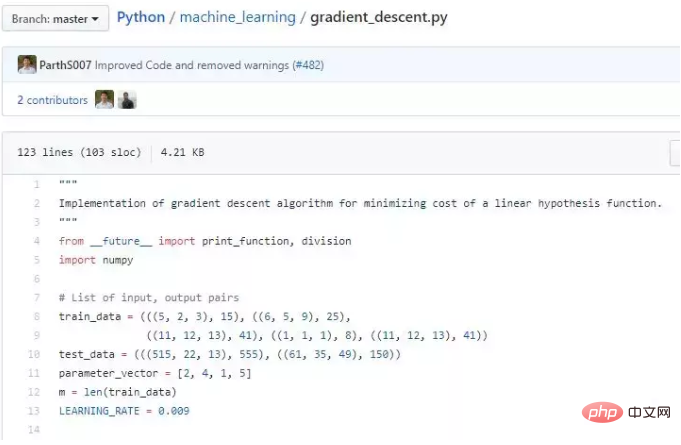 I hope this project will be helpful to your study, and I will give you another portal:
I hope this project will be helpful to your study, and I will give you another portal:
https://github.com/TheAlgorithms/Python
One more thing.
These Indian guys not only started a project to learn Python, but similar resource collection projects also include: Java, C, C, Scala, C#, etc...
The above is the detailed content of One Python can implement all algorithms. For more information, please follow other related articles on the PHP Chinese website!

Hot AI Tools

Undresser.AI Undress
AI-powered app for creating realistic nude photos

AI Clothes Remover
Online AI tool for removing clothes from photos.

Undress AI Tool
Undress images for free

Clothoff.io
AI clothes remover

Video Face Swap
Swap faces in any video effortlessly with our completely free AI face swap tool!

Hot Article

Hot Tools

Notepad++7.3.1
Easy-to-use and free code editor

SublimeText3 Chinese version
Chinese version, very easy to use

Zend Studio 13.0.1
Powerful PHP integrated development environment

Dreamweaver CS6
Visual web development tools

SublimeText3 Mac version
God-level code editing software (SublimeText3)

Hot Topics
 1387
1387
 52
52
 Is the vscode extension malicious?
Apr 15, 2025 pm 07:57 PM
Is the vscode extension malicious?
Apr 15, 2025 pm 07:57 PM
VS Code extensions pose malicious risks, such as hiding malicious code, exploiting vulnerabilities, and masturbating as legitimate extensions. Methods to identify malicious extensions include: checking publishers, reading comments, checking code, and installing with caution. Security measures also include: security awareness, good habits, regular updates and antivirus software.
 How to run programs in terminal vscode
Apr 15, 2025 pm 06:42 PM
How to run programs in terminal vscode
Apr 15, 2025 pm 06:42 PM
In VS Code, you can run the program in the terminal through the following steps: Prepare the code and open the integrated terminal to ensure that the code directory is consistent with the terminal working directory. Select the run command according to the programming language (such as Python's python your_file_name.py) to check whether it runs successfully and resolve errors. Use the debugger to improve debugging efficiency.
 Can vs code run in Windows 8
Apr 15, 2025 pm 07:24 PM
Can vs code run in Windows 8
Apr 15, 2025 pm 07:24 PM
VS Code can run on Windows 8, but the experience may not be great. First make sure the system has been updated to the latest patch, then download the VS Code installation package that matches the system architecture and install it as prompted. After installation, be aware that some extensions may be incompatible with Windows 8 and need to look for alternative extensions or use newer Windows systems in a virtual machine. Install the necessary extensions to check whether they work properly. Although VS Code is feasible on Windows 8, it is recommended to upgrade to a newer Windows system for a better development experience and security.
 Can visual studio code be used in python
Apr 15, 2025 pm 08:18 PM
Can visual studio code be used in python
Apr 15, 2025 pm 08:18 PM
VS Code can be used to write Python and provides many features that make it an ideal tool for developing Python applications. It allows users to: install Python extensions to get functions such as code completion, syntax highlighting, and debugging. Use the debugger to track code step by step, find and fix errors. Integrate Git for version control. Use code formatting tools to maintain code consistency. Use the Linting tool to spot potential problems ahead of time.
 Choosing Between PHP and Python: A Guide
Apr 18, 2025 am 12:24 AM
Choosing Between PHP and Python: A Guide
Apr 18, 2025 am 12:24 AM
PHP is suitable for web development and rapid prototyping, and Python is suitable for data science and machine learning. 1.PHP is used for dynamic web development, with simple syntax and suitable for rapid development. 2. Python has concise syntax, is suitable for multiple fields, and has a strong library ecosystem.
 Can vscode be used for mac
Apr 15, 2025 pm 07:36 PM
Can vscode be used for mac
Apr 15, 2025 pm 07:36 PM
VS Code is available on Mac. It has powerful extensions, Git integration, terminal and debugger, and also offers a wealth of setup options. However, for particularly large projects or highly professional development, VS Code may have performance or functional limitations.
 Can vscode run ipynb
Apr 15, 2025 pm 07:30 PM
Can vscode run ipynb
Apr 15, 2025 pm 07:30 PM
The key to running Jupyter Notebook in VS Code is to ensure that the Python environment is properly configured, understand that the code execution order is consistent with the cell order, and be aware of large files or external libraries that may affect performance. The code completion and debugging functions provided by VS Code can greatly improve coding efficiency and reduce errors.
 Golang vs. Python: Concurrency and Multithreading
Apr 17, 2025 am 12:20 AM
Golang vs. Python: Concurrency and Multithreading
Apr 17, 2025 am 12:20 AM
Golang is more suitable for high concurrency tasks, while Python has more advantages in flexibility. 1.Golang efficiently handles concurrency through goroutine and channel. 2. Python relies on threading and asyncio, which is affected by GIL, but provides multiple concurrency methods. The choice should be based on specific needs.




